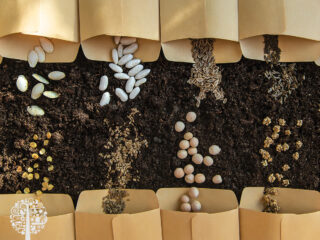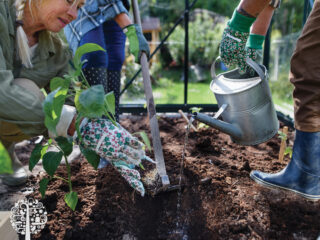Every Community Needs a Garden Club! Here’s How to Start One
Ladies in fancy hats drinking tea is often the image of a garden club, but in the 21st century, that couldn’t be further from reality. Modern garden clubs are for anyone who has an affinity for gardening and would like to share that love through storytelling and knowledge exchange. Many garden clubs are large and formally organized, but they don’t have to be. A neighborhood garden club can be a few friends or a small group of people who may or may not drink tea.
Ecosystem Benefits of a Garden Club
In an increasingly isolated world, people seek out like-minded people with similar interests. A garden club is a great way to meet new people, strengthen community bonds, learn about sustainable gardening practices and new gardening methods, and gain insights into plant types they might not have otherwise encountered.
The exchange of seeds and plants can be an integral part of a garden club. This action enriches the biodiversity of our gardens and creates regional ecosystems in which wildlife, including pollinators, thrive.


Spreading the Word about your Garden Club
Start by asking your neighbors and friends if they are interested in forming a garden group; post signs at your local community center, neighborhood cafe (many have community boards), the local library, and your local nurseries. Create a Facebook group specifically for gardeners in your area. Ask those interested to contact the email or social media contact provided for the date and time of your first meeting. A communal spot such as a coffee shop, library, or community center is a good meeting place; these locations typically don’t charge for using their spaces.
What’s the Purpose of your Garden Club?
Once you form a group, it’s time to come up with a catchy name and decide on your group’s focus. This will keep everyone on the same page and guide all future activities and decisions of the club. Some ideas might include:
- Meeting to simply chat about how everyone’s garden is doing
- A plant or seed exchange so that everyone is sharing and reaping the benefits of each other’s gardens
- Arrange for speakers to come to the group and talk about topics such as composting or how to create pollinator pathways
- Potential partnerships with schools or other organizations to build new gardens
Finally, do you want all activities to be free, or does the group want to create a slush fund to cover administration costs such as outings or food catering at meetings?


How to Structure a Garden Club
A garden club can be as formal or as informal as you want it to be. It can be organized with a hierarchical structure that includes a chairperson (generally the meeting coordinator and organizer), a treasurer, and other nominated people who carry out all the responsibilities connected with meeting agendas, notifications, etc. Alternatively, all group members can share responsibilities on a rotational basis.
Garden Club Inspiration
Look to other communities for ideas and inspiration when setting up a garden club! The following sites list garden clubs:




